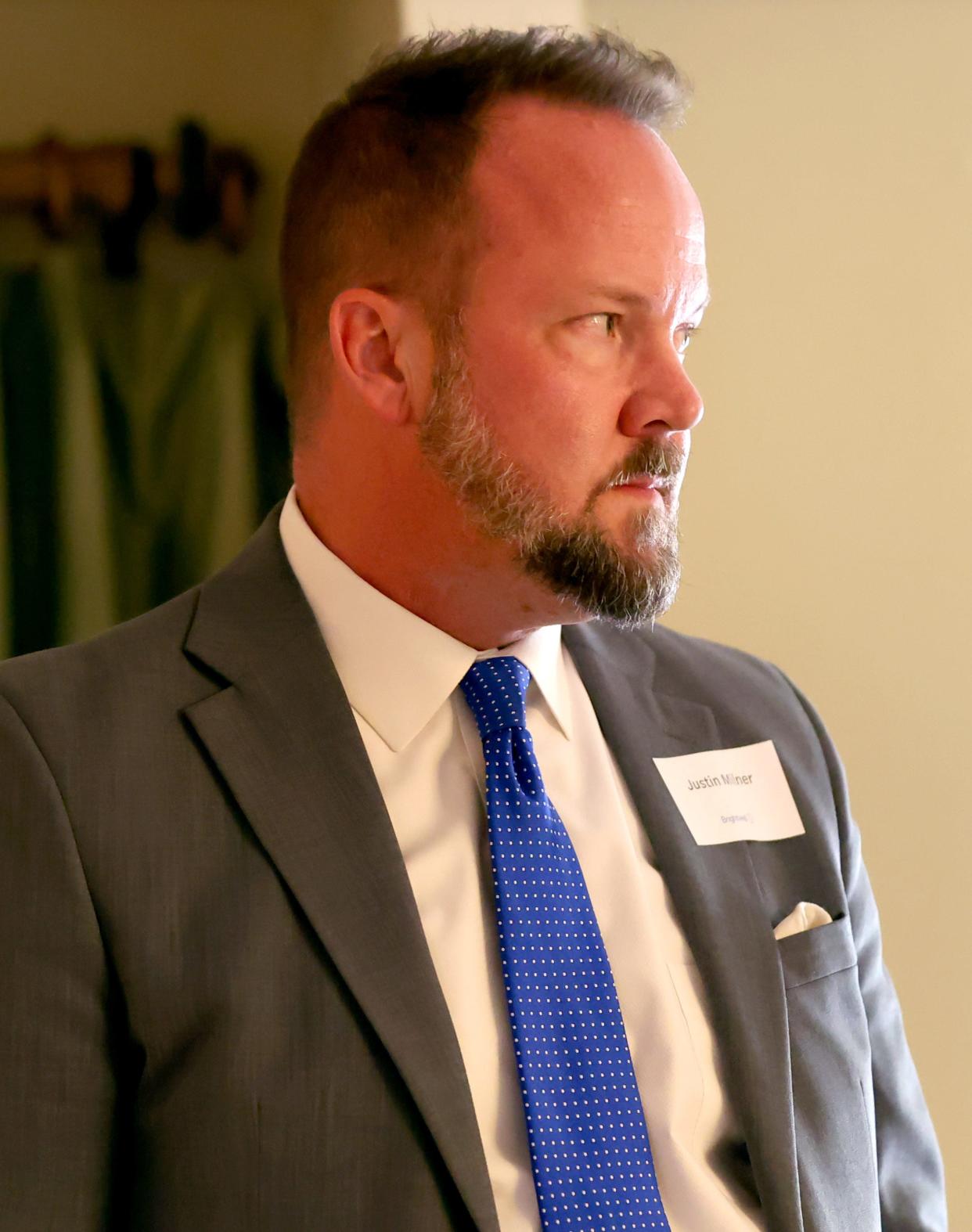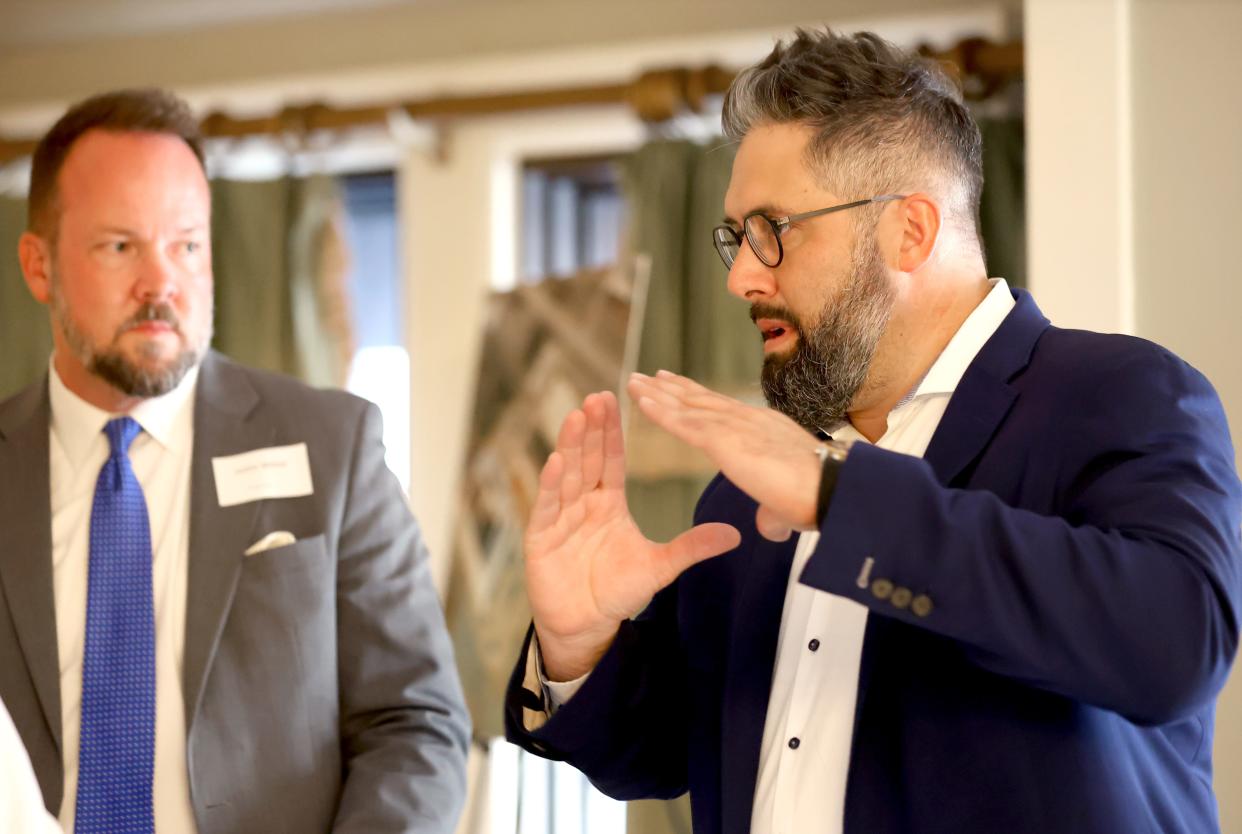How Norman Public Schools, Regional Food Bank are installing solar at no cost to them
NICHOLS HILLS — For years, Norman Public Schools had considered using solar energy to power buildings, but the start-up process to do so seemed cost-prohibitive, said Justin Milner, the district’s associate superintendent and chief operating officer.
But this month, solar panels are being installed at Norman North High School, thanks to the confluence of a new federal tax credit focused on solar power and a new company that pairs anonymous donors-turned-investors with nonprofit agencies.
That Oklahoma City-based company, Brightwell, held a kickoff event this month at Oklahoma City Golf & Country Club featuring a panel that included Milner and a representative of the Regional Food Bank of Oklahoma, another group that’s going solar after Brightwell linked it up with an investor.
“We’ve been taking a look at this for at least the last seven years in Norman,” Milner said. “We understand our role and responsibility with the environment, and we’re also looking at ways of how to shave those energy bills."
Miller said funding is always a challenge in public education and said the district preferred to cut its utility costs than trim in other areas. "That’s the furthest away from our classrooms. This is a great way to do that.”
Milner said Brightwell “brought something to us that no one had ever been able to do, because (with) other companies that we visited with, there was always a significant amount of capital outlay. With Brightwell, we were able to lean into investors and still take advantage of the savings for our community, therefore returning dollars back to the classroom. It was a win-win.”

How does a new law encourage the growth of solar power?
A key element of the federal Inflation Reduction Act passed in 2022 was the creation of incentives for solar development, including tax credits designed to make solar energy more affordable and accessible. The law provided $369 billion for solar development through 2034.
The elements of the new law provided an opportunity for Tony Capucille, who founded Brightwell last year. His idea was to provide a forum through which investors could repurpose what otherwise would be money paid in federal taxes and instead direct that money toward solar projects that would benefit nonprofits. Like Milner, he sees Brightwell’s model as a win-win — the nonprofits save on installation and maintenance costs for solar systems, as well as on energy costs, while the investor also receives a return, allowing the investor to make an even larger impact on the recipient organization.
“When new things happen, you always have to have that innovator that helps you break through,” Capucille said. “Since Norman has started, we’ve had calls in asking about the same program. It’s setting a trend. We can take care of as many schools as have good roofs and an administration that wants to go solar. The appetite from the investment community is very large to put these projects together for school districts … It’s almost like a bond-grade investment.”
But before finding a donor, he had to find a local school district willing to be Brightwell’s first partner. Capucille’s search ended when he connected with Norman. After looking at various possibilities for a test run, Norman North High School was selected because its main building had just received a new roof after storm damage.
One of Norman North’s larger meters, which provides electricity to most of the main building, will be fully powered through solar energy.
The Norman school board approved the agreement in November, and the project is moving quickly. Milner and Capucille are hopeful the solar panels will begin providing power for the high school by late April or early May.
“Capitalizing these projects is always the problem with nonprofits, because competing capital interests are always there,” Capucille said. “There’s always going to have something else they need to spend their money on. Keeping the lights on is not the most exciting thing a school does, but it’s a necessity. You can’t get around it.”
Milner said over the life of the 30-year deal, the district expects to save about $1 million in utility costs at Norman North. He said the decision made by the board would benefit not only the current generation of Norman students, but the next generation, as well.

Other groups are also using the new law to move toward solar power
Norman Public Schools isn’t the only group using Brightwell’s model to move to solar power. Brightwell paired the Regional Food Bank of Oklahoma with an investor last year, and the nonprofit’s headquarters building at 3355 S Purdue Ave. now has solar panels on its roof. Stacy Dykstra, the food bank’s chief executive officer, said the nonprofit should spend about 40% less than it previously had on utility costs.
“It’s like you won the lottery,” Dykstra said. “Our work at the Regional Food Bank has to be focused on the people that we serve. We want to make sure food is in people’s hands, and what Brightwell did is they came in and allowed us to stay focused on the people facing hunger in Oklahoma.”
Cassie Gilman, the chief advancement officer for the Regional Food Bank, said one of the agency’s core values is stewardship, and using solar helps fulfill that value.

“We were always looking at solar as an option,” Gilman said. “What we’re able to do with this project, we’re able to put all of those resources back into feeding people and not spending them on a capital project.”
Milner said the Norman district will see how the Norman North solar experiment works but can foresee a day when the district will add solar panels at other school sites. Milner said 75% of the district’s 24 school sites would seem to be good prospects for adding solar power.
“That’s the goal,” Milner said. “We hope to be able to roll this out with a few more, but we wanted to start with Norman North and get everything up and operating before we start down the line of other sites. There’s a good five to 10 at the top of my list that we’d love to explore.”
This article originally appeared on Oklahoman: Norman Public Schools using new tax credit for solar panel install
